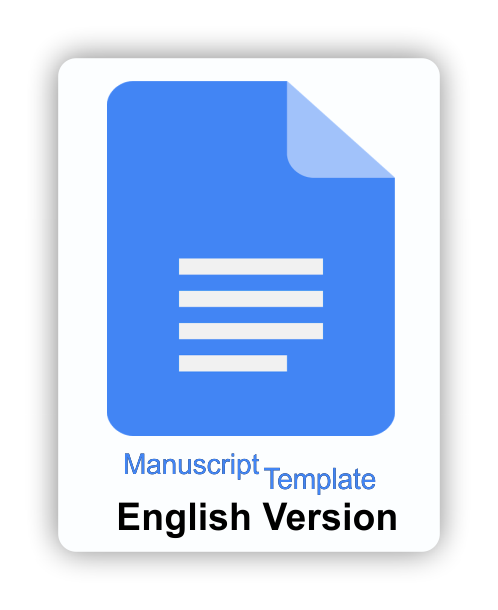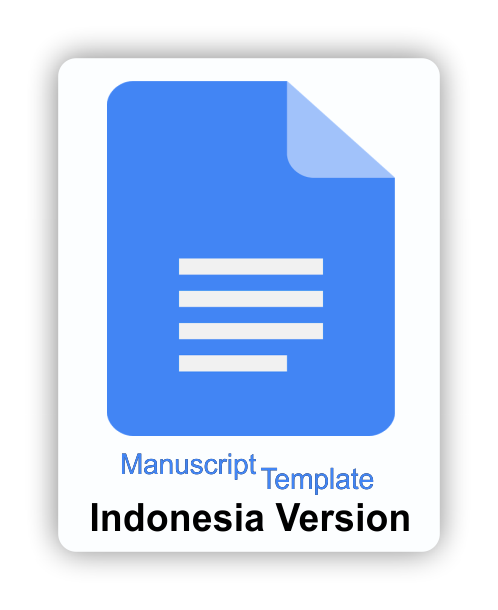Cognitive load in high school students during online learning amidst the Covid-19 pandemic: A qualitative study in Bantul, Indonesia
Downloads
Afriansyah, A. (2020). Covid-19, Transformasi pendidikan dan berbagai problemnya. Retrieved 22 Juli 2020, https://kependudukan.lipi.go.id/id/berita/53-mencatatcovid19/838-covid-19-transformasi-pendidikan-dan-berbagai-problemnya
Ahad, M.A., Tripathi, G. & Agarwal, P. (2018). Learning analytics for IoE based educational model using deep learning techniques: architecture, challenges and applications. Smart Learn. Environ. 5, 7. https://doi.org/10.1186/s40561-018-0057-y
Antonenko, P. D., & Niederhauser, D. S. (2010). The influence of leads on cognitive load and learning in a hypertext environment. Computers in Human Behavior, 26(2), 140–150. https://doi.org/10.1016/j.chb.2009.10.014
Anwar, M. K. (2017). Pembelajaran mendalam untuk membentuk karakter siswa sebagai pembelajar. Tadris: Jurnal Keguruan dan Ilmu Tarbiyah, 02(2), 97-104. https://doi.org/10.24042/tadris.v2i2.1559
Ayres, P. (2006). Using subjective measures to detect variations of intrinsic cognitive load within problems. Learning and Instruction, 16(5), 389–400. https://doi.org/10.1016/j.learninstruc.2006.09.001
Bolkan, S. (2016). The importance of instructor clarity and its effect on student learning: facilitating elaboration by reducing cognitive load. Communication Reports, 29(3), 152–162. https://doi.org/10.1080/08934215.2015.1067708
Chaeruman, U.A. (2013). Merancang blended learning yang membelajarkan. Paper seminar. 28 November 2013. Available at: https://scholar.google.co.id/citations?user=6gTiQPcAAAAJ&hl=id&oi=sra
Chaeruman, U.A., Bintoro, T., Hartoto, & Maudiarti S. (2019). How do teachers perceive modern instruction? An online survey to pre-service and in-service teachers. Advances in social science. Education and Humanities Research, volume 372, 242-246 http://creativecommons.org/licenses/by-nc/4.0/
Chaeruman, U.A., Wibawa, B. & Syahrial, Z. (2020). Development of an instructional system design model as a guideline for lecturers in creating a course using blended learning approach. International Journal of Interactive Mobile Technologies (iJIM), 14(14), 164-181. https://doi.org/10.3991/ijim.v14i14.14411
Chen, O., Castro-Alonso, J.C., Paas, F. et al. (2018). Extending cognitive load theory to incorporate working memory resource depletion: Evidence from the spacing effect. Educ Psychol Rev 30, 483–501. https://doi.org/10.1007/s10648-017-9426-2
Chen, O., Retnowati, E., & Kalyuga, S. (2018). Effects of worked examples on step performance in solving complex problems. Educational Psychology, https://doi.org/10.1080/01443410.2018.1515891
Creswell, J. W. (2015). Penelitian kualitatif & desain riset: Memilih di antara lima pendekatan (edisi ketiga). (Translation Ahmad Lintang Lazuardi). Thousand Oaks: SAGE.
Curum, B., & Khedo, K.K. (2021). Cognitive load management in mobile learning systems: Principles and theories. J. Comput. Educ. 8, 109–136. https://doi.org/10.1007/s40692-020-00173-6
Degeng, I.N.S. (2013). Ilmu pembelajaran: Klasifikasi variabel untuk pengembangan teori dan penelitian. Bandung: Kalam Hidup.
del Valle, R., Duffy, T.M. (2009). Online learning: Learner characteristics and their approaches to managing learning. Instr Sci 37, 129–149. https://doi.org/10.1007/s11251-007-9039-0
Dick, W., Carey, L., & Carey, J. (2015). The systematic design of instruction eighth edition. New Jersey: Pearson.
Fitria, P. A., & Saputra, D. Y. (2020). Dampak pembelajaran daring terhadap kesehatan mental mahasiswa semester awal. Jurnal Riset Kesehatan Nasional, 4(2), 60–66. https://doi.org/10.37294/jrkn.v4i2.250
Fullan, M., & Langworthy, M. (2014). A rich steam: How new pedagogies find deep learning. London: Pearson.
Hernawan, A. H., Lestari, T., & Permatasari, E. (2021). Studi evaluasi pembelajaran daring dan pengaruhnya pada resiliensi akademik mahasiswa. EduHumaniora, 13(2), 104–111. https://doi.org/10.17509/eh.v13i2.35304
Isrokatun, I., Rahayu, M., & Dewi, W. (2022). Pengaruh pembelajaran daring terhadap kesehatan mental peserta didik di masa pandemi COVID-19. Jurnal Basicedu, 6(1), 834-851. doi:https://doi.org/10.31004/basicedu.v6i1.1987
Jhala, M., Mathur, J. (2019). The association between deep learning approach and case based learning. BMC Med Educ 19, 106. https://doi.org/10.1186/s12909-019-1516-z
Marton, F., & Säljí¶, R. (1976). On qualitative diferences in learning: I"”Outcome and process. British Journal of Educational Psychology, 46(1), 4–11. https://doi.org/10.1111/j.2044-8279.1976.tb02980.x
Mayer, R. E., & Moreno, R. (1998). A split-attention efect in multimedia learning: Evidence for dual processing systems in working memory. Journal of Educational Psychology, 90(2), 312–320. https://doi.org/10.1037/0022-0663.90.2.312
Mayer, R. A. (2003). Elements of a science of e-learning. Journal of Educational Computing Research, 29(3), 297–313. https://doi.org/10.2190/YJLG-09F9-XKAX-753D
Miller, E.C., Krajcik, J.S. (2019). Promoting deep learning through project-based learning: a design problem. Discip Interdscip Sci Educ Res 1, 7. https://doi.org/10.1186/s43031-019-0009-6
Mukti, S.C, Zulfiati H. M, Amin S, Sulaimon J.T. Applying Problem-Based Learning for boosting the Primary Students Participation in Learning Science in Indonesia 2023:60–7. https://seminar.ustjogja.ac.id/index.php/ICoTPE/article/view/869/511
Muzakki, A. (2020). "Kasihanilah, beban kami berat!": Analisis digital media ethnography terhadap tantangan akademik dan sosial-ekonomi mahasiswa atas pembelajaran di masa pandemi Covid-19. The Sociology of Islam, Vol. 1, No. 1, 1-31. ) http://jurnalfisip.uinsby.ac.id/index.php/JSI
Orru, G., & Longo, L. (2019). The evolution of cognitive load theory and the measurement of its intrinsic, extraneous and germane loads: a review. Human Mental Workload: Models and Applications, 23–48. https://doi.org/10.1007/978-3-030-14273-5_3
Palupi, T.N. (2020). Tingkat stres pada siswa-siswi sekolah dasar dalam menjalankan proses belajar di rumah selama pandemi Covid-19. JP3SDM, Vol 9(2), 18-29. https://ejournal.borobudur.ac.id/index.php/psikologi/article/view/716
Putri, A. K., Reynanda, S. A., & Raisa, R. R. (2021). Pengaruh pembelajaran daring terhadap kesehatan mata di masa pandemi. Jurnal Komunitas Kesehatan Masyarakat, 3(2), 26-38 https://www.academia.edu/75772020/Pengaruh_Pembelajaran_Daring_Terhadap_Kesehatan
Rahardjo, W., Qomariyah, N., Mulyani, I., & Andriani, I. (2020). Social media fatigue pada mahasiswa di masa pandemi COVID-19: Peran neurotisisme, kelebihan informasi, invasion of life, kecemasan, dan jenis kelamin. Jurnal Psikologi Sosial, Special Edition COVID-19. https://doi.org/10.7454/jps.2021.16
Rahman, G., Nurfajriani, & Jahro, I. S. (2020). Tren penelitian pendidikan proses pembelajaran daring selama pandemi Covid 19. Prosiding Seminar Nasional Kimia Berwawasan Lingkungan, 31–37. http://jurnal.kimia.fmipa.unmul.ac.id/index.php/prosiding/article/view/986
Rahmat, A. & Hindriana, A.F. (2014). Beban kognitif mahasiswa dalam pembelajaran fungsi terintegrasi struktur tumbuhan berbasis dimensi belajar. Jurnal Ilmu Pendidikan, Jilid 20, Nomor 1, 66-74. http://journal.um.ac.id/index.php/jip/article/view/4379
Reigeluth, C.M. (Ed.). (1993). Instructional-design theories and models, volume II. Hillsdale, New Jersey: Lawrence Erlbaum Associates Publishers.
Santosa, F. H., Negara, H. R. P., & Bahri, S. (2020). Efektivitas pembelajaran Google Classroom terhadap kemampuan penalaran matematis siswa. Jurnal Pemikiran dan Penelitian Pendidikan Matematika (JP3M), 3(1), 62-70. https://doi.org/10.36765/jp3m.v3i1.254
Smaldino, S.E., Lowther, D.L., Mims, C. & Russell, J.D. (2015). Instructional technology and media for learning eleventh edition. New Jersey: Pearson.
Surahman, E., & Surjono, H. (2017). Pengembangan adaptive mobile learning pada mata pelajaran biologi SMA sebagai upaya mendukung proses blended learning. Jurnal Inovasi Teknologi Pendidikan, 4(1), 26-37. https://doi.org/10.21831/jitp.v4i1.9723
Surahman, E., Sulthoni, & Pratama, U. N. (2021). Online observation protocol to supervise online learning and its sample report BT - Proceedings of the 7th International Conference on Education and Technology (ICET 2021). 6–12. https://www.atlantis-press.com/proceedings/icet-21/125964508
Surjono, H. D., Muhtadi, A., & Trilisiana, N. (2019). The effects of online activities on student learning outcomes in blended learning environment. Proceedings of the 2019 3rd International Conference on Education and Multimedia Technology (ICEMT), 107-110. https://doi.org/10.1145/3345120.3345167
Sweller, J., van Merrií«nboer, J.J.G. & Paas, F. Cognitive architecture and instructional design: 20 years later. Educ Psychol Rev 31, 261–292 (2019). https://doi.org/10.1007/s10648-019-09465-5
Thahura, F., & Tutdin, Z. (2021). Peran efikasi diri terhadap beban kognitif dan stress akademik mahasiswa selama pembelajaran daring di masa pandemi. Jurnal Kajian Psikologi dan Konseling, 12(2), 981-987. https://doi.org/10.24114/konseling.v19i2.30433
Trilisiana, N. (2020). Lingkungan belajar cerdas demi kebermaknaan pembelajaran di saat Pagebluk. Dalam: Herwin, Kusumawardani, E., Nurmalasari, Y., Purwandari, E. (eds.) Inovasi dan Transformasi Pendidikan Bermakna di Era New Normal. FIP UNY, Yogyakarta.
Yuwono, S.D. (2020). Profil kondisi stres di masa pandemi covid-19 sebagai dasar intervensi dalam praktek mikrokonseling. Ristekdik (Jurnal Bimbingan dan Konseling), 5(1), 132:138. http://jurnal.um-tapsel.ac.id/index.php/Ristekdik/article/view/1787
The journal allows the author(s) to hold the copyright without restrictions. Finally, the journal allows the author(s) to retain publishing rights without restrictions
 | Jurnal Inovasi Teknologi Pendidikan by http://journal.uny.ac.id/index.php/jitp is licensed under a Creative Commons Attribution-ShareAlike 4.0 International License. |















